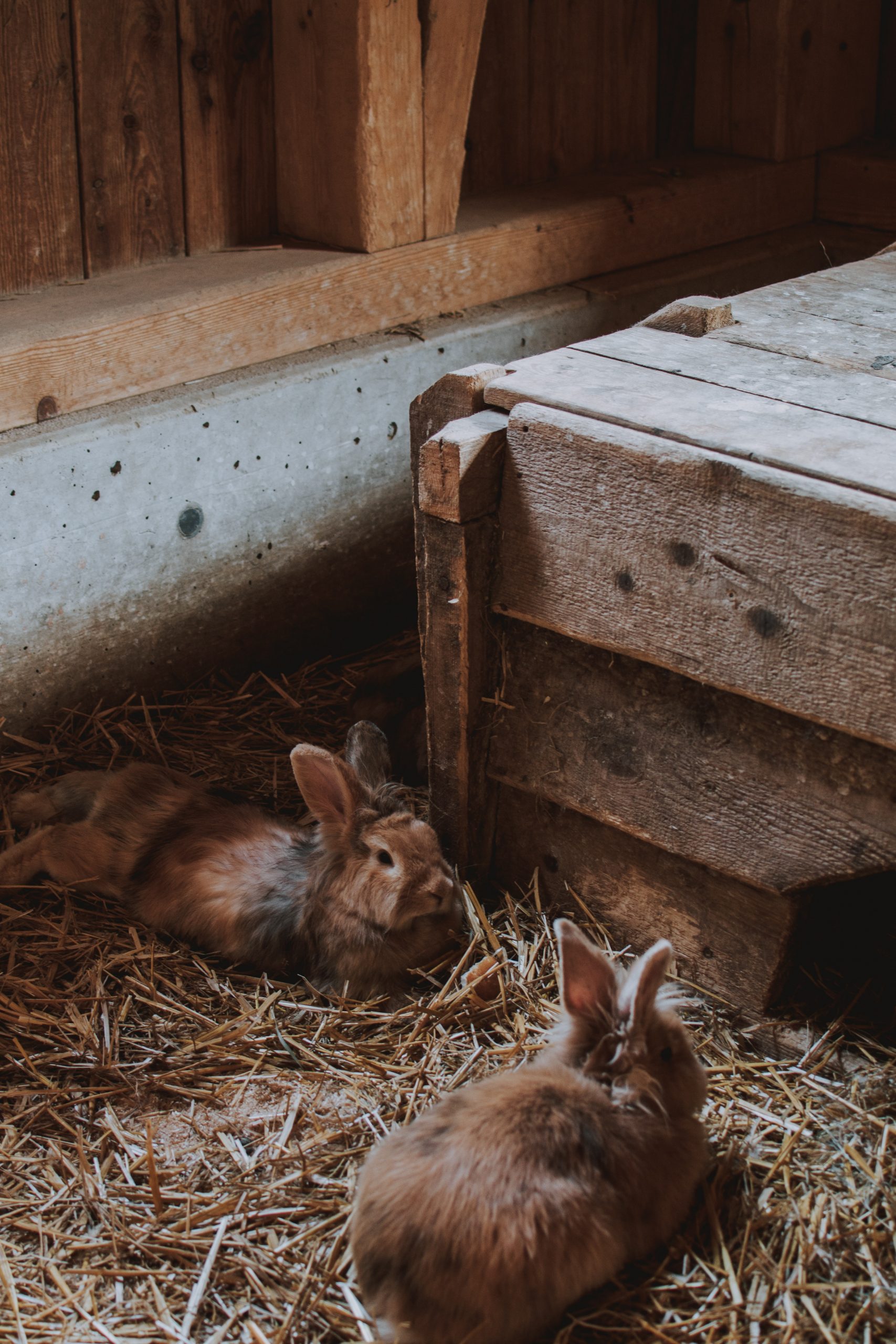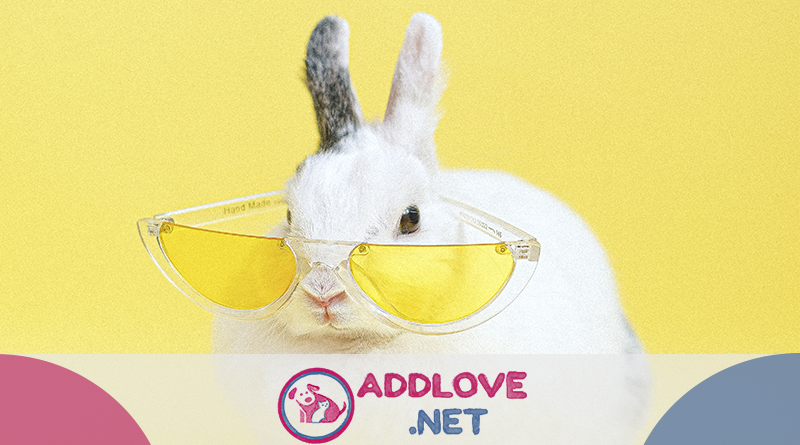A decorative rabbit is a more vulnerable and gentle pet than a cat or dog. He needs special care, which consists in observing certain rules. We will talk about them today.
A properly cared for rabbit can live up to 12 years. He has a beautiful soft coat that is a pleasure to touch. In addition, a rabbit in a good mood is a cheerful animal that happily participates in games. You have a wonderful incentive to take care of your pet properly!
Caring for a decorative rabbit: equipping a cage
The cage should not be too tight. It is desirable that it be 4-5 times larger than the rabbit itself. Inside should fit a feeder, drinker, tray and house. The cage tray must be solid. Rabbits do not know how to move comfortably on wire mesh trays. If you do purchase a cage with a mesh bottom, cover the bottom with a plastic tray or similar item.
A litter is laid at the bottom. Ideal is straw or sawdust. The litter must be dry. If it is wet and dirty, the pet may have stomach problems. It is recommended to clean the bedding at least three times a week. If the rabbit is seriously contaminated, a complete replacement is necessary. Some breeders recommend not to fill the bedding at all, since the animal goes to the toilet wherever it pleases. It all depends on the nature of your pet. If he is easily accustomed to the litter box, there is no need to deprive the rabbit of soft litter.
Place the tray in the cage. Inside you need to pour straw, fine sawdust or paper. You must clean the tray every day. Decorative rabbits are clean animals. They will prefer to fulfill their natural needs not in a dirty tray, but in another, clean place in the cage. Hence the unpleasant smell, which many owners complain about.
Attach the feeder and automatic drinker securely to the cage. The rabbit uses any unsecured part in its games. You won’t like it, especially at night. It is better to use a massive ceramic bowl for feeding. The rabbit cannot turn it over. If you want to know how to care for rabbits and what to feed them, you must have an understanding of the pet’s habits. Activity is one of them. To prevent the rabbit from making too much noise, you need to deprive him of the opportunity to “bully” in the cage.
Cage placement guidelines:
- a place inaccessible to other pets;
- protected from direct sunlight;
- located far from doors that are often opened, an air conditioner, a battery, a heater;
- located in a room with a temperature of 18-20 degrees. Small deviations are allowed.
It is necessary to protect your pet from external irritants that can scare him. For example, from screaming and hitting the cage. Due to fright, the rabbit’s heart may be disrupted.
About the diet of decorative rabbits
The basis of the diet of these pets is hay. Food should always be in the cage manger. Important! Before giving hay to your rabbit, make sure it is free of rot, sweetness, and unpleasant odors. The pet’s stomach is extremely vulnerable, and any defect in food can lead to its upset.

Many people make the mistake of putting feed on the cage tray. The rabbit can “mark” newly arrived hay, which can quickly spoil it. After that, the pet will eat the already spoiled hay, which again will lead to an upset stomach.
You need to give the rabbit compound feed. This food improves digestion and keeps teeth in good condition. Baby rabbits can be given 1 tablespoon three times a day. In the case of adults, it is not the amount of feed that changes, but the way it is fed: 1.5 tablespoons twice a day. Rabbits eat the grains first and then move on to the pellets. Therefore, if you see that your pet has “not eaten” the pellets, do not throw them away.
Grass is a healthy food for ornamental rabbits, but you need to be careful with it. First, the grass should not be given to individuals under 4 months old. Secondly, this food needs to be fed a little. A few leaves are enough. Thirdly, the grass must be dried and only then given to the pet. The most useful herbs are chamomile, yarrow, and mouse peas.
Vegetables and fruits are introduced into the diet no earlier than 2 months. Rabbits love apples and carrots, for example. You need to start with a few small slices. Decorative rabbits care and nutrition is in many respects the observance of the “dosage” of food. Large portions of new food can cause stomach problems.
You can pamper your rabbit with branches of pear, birch, currant, mountain ash. First, you need to clean them from the leaves. They love rabbits and dried fruits.
An excellent solution would be to purchase special food for rabbits at the pet store. It can include fruits, grains, vegetables, and many other beneficial ingredients.
After the rabbit has eaten, do not pick it up right away.
What food is forbidden to give to rabbits:
- confectionery;
- sour food;
- baked goods;
- Exotic fruits;
- “Milk”;
- meat;
- potatoes;
- sunflower seeds.
Water is given as usual. It must either be filtered or boiled and defended. Only serve chilled water. It should always be available. It is forbidden to give mineral water to rabbits. Salts are retained in the body of the animal, forming stones.
Decorative rabbits grooming wool and claws
The main recommendation regarding animal hair is to comb it out regularly. This is especially true for long-haired breeds. If the rabbit is not combed out, over time, the fur will begin to clump. Of course, in this case, you can forget about the attractiveness of the animal. In fact, brushing a rabbit is a very simple procedure, since the animal is miniature. It lasts 5-10 minutes. You need to comb your rabbit 2-3 times a week.
Ornamental rabbits molt twice a year. Most individuals molt in spring and autumn. At this time, combing should be given special attention. Brush your pet every day.
As for bathing a pet, everything is simple here. These animals are clean. They often wash their wool for a long time. It is necessary to bathe rabbits in exceptional cases. For example, if an animal that suffers from indigestion and diarrhea gets dirty. It is advisable to wash only the dirty part. Can’t use human shampoos. Do not wet your head and ears. Do not bathe your rabbit in hot water: the temperature should be slightly higher than room temperature. After bathing, protect the rabbit from drafts and coolness. It is advisable to close windows and doors. Do not dry your rabbit with a hairdryer.
You don’t need to bathe your rabbit “for prevention.” Firstly, it is a great stress for the animal and for its heart in particular. Secondly, due to frequent bathing, the animal’s hair falls out.
Remember about such an important thing as caring for the claws of decorative rabbits. If you do not trim on time, the following will happen:
- the animal’s fingers will twist because of the discomfort when walking. They will remain in this position even after a haircut;
- posture is deformed, since the load on the body is not distributed correctly;
- the claw can break out after catching on something.
For trimming, use either a nail clipper or ordinary pedicure nippers. The first trim should be done at the age of 1.5-2 months. In the future, it is recommended to carry out the procedure every 3-4 weeks. You can do it yourself or take your pet to the veterinarian. The trim is quick and does not cost much.
Caring for the claws of a decorative rabbit should be on the agenda of every breeder. An animal with uncut claws looks unhappy and lethargic.
Conclusion
To keep your rabbit doing well, you need to do the following:
- equip the cage correctly;
- feed and water the rabbit on time, monitor the diet;
- trim his claws, wash when necessary;
- don’t scare the rabbit;
- protect it from heat;
- do not let children treat the animal roughly – it can die of fear;
- do not drop the rabbit: due to the fact that the pet has a fragile spine, it may die as a result of falling from a height of human growth;
- protect your rabbit from other animals. Cat and rabbit catch-ups look funny, but they are very harmful for the latter;
- protect the animal from loud noises.
If you follow these rules, your pet rabbit will certainly live a long and happy life.


